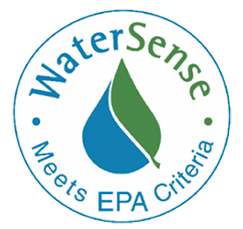P2 Section #5 | General P2 Opportunities - Pg 1

Section 5 | General P2 Opportunities
Revised On: March. 17, 2024 - 8:00 p.m.
Learning Objectives:
- Describe product labels to help conserve energy and water
- Identify some easy-to-implement energy and water P2 opportunities
Facility-Wide P2 Opportunities
Facility-wide P2 opportunities relate to various processes at your facility. They can result in energy and water conservation or a reduction in waste generation. Many facility-wide opportunities involve improvements to the building, multi-use equipment, and overall organization.
Energy
The first thing to do in any building is check the installed lighting type. Light-emitting Diode (LED) lighting works with existing infrastructure and quickly provides a return on investment while reducing energy usage. LEDs use around 90% less energy than traditional bulbs and produce far less heat, providing better working conditions. This does not mean that existing light bulbs should be replaced immediately, but as old bulbs burn out, they can be replaced with the LED alternative. This can be combined with motion-detecting light switches that’ll turn off when not in use to reduce energy use further.
When you're looking for a lighting manufacturer, it can be overwhelming with so many options available. However, a simple way to narrow down your choices is to look for an ENERGY STAR certification. This program, managed by the Environmental Protection Agency (EPA), sets energy efficiency specifications that products must meet to be certified and use the ENERGY STAR label. This program isn't limited to lighting, so it's worth checking for an ENERGY STAR-labeled alternative for any equipment you use at your facility.

Heating, ventilation, and air conditioning (HVAC) are vital systems for any building in Arizona. The ENERGY STAR label is a great way to find energy-efficient air conditioning equipment. However, it's important to note that the building's supporting infrastructure is just as crucial as the equipment itself. Factors such as windows, lighting, doorways, and roofs can significantly affect how long a building stays cool. That's why checking the building's envelope is essential, which provides structural support, control, and aesthetics. A loose envelope allows the outside environment to enter the building without mechanical means, making it challenging to maintain comfortable temperatures. On the other hand, a tight envelope prevents the outside environment from entering the building.
To improve the building's envelope, start by ensuring that entry/exit doors remain shut when the weather is hot. In closed parts of the facility, such as the office, check for light coming through small cracks in the windows and doorways, which indicates leaks in the building that let cool air out. Weatherstripping is a cost-effective tool to fix big gaps in doorways and improve the building’s envelope. To minimize heat coming from windows, consider using blinds/curtains/shades in light colors that reflect some of the heat energy instead of absorbing it. Exterior options such as awnings can also be helpful. Cool roofs are a less common option but have many benefits, like money savings and cooler indoor temperatures. Achieving a cool roof can be as simple as painting the roof a light color. This will increase the surface albedo, meaning a body or surface reflects a fraction of light. Lighter colors reflect light, whereas darker colors absorb light, thus making the structure warmer. Another option is to add plants and foliage to roofs, known as green roofs. In addition to energy savings and increased insulation, green roofs reduce stormwater runoff and filter toxins and pollutants.
Water

Our water supply is derived from various sources, including the Colorado River, other in-state rivers, groundwater, and reclaimed water. Several storage reservoirs and delivery systems have been constructed across the state to ensure that Arizona's water supply is used efficiently. These include the major Salt, Verde, Gila, and Agua Fria river reservoirs. These water bodies are sustained by precipitation and melted snowpack from high elevations. However, maintaining this renewable resource demands careful management. Any reduced usage from businesses to residents is a welcome addition to preserve our water supply.
Water reductions start with being mindful of your usage. Whenever you use water, always consider if you’re using what’s necessary. This can help to determine some root causes of overuse from daily facility activities. To further minimize water usage, look for a WaterSense label when purchasing new plumbed-in products.

WaterSense is the water equivalent of ENERGY STAR. This is another program the EPA manages that focuses on water-efficient products, homes, commercial buildings, and services. Looking for the WaterSense label ensures that the product is efficient and performs just as well as alternatives.
There are some quick and low-cost opportunities for reducing water usage at your facility. Check to see if any faucets you have are aerated. These are found at the end of the faucet and limit the volume of water coming through. This is great for any spot where high volume is unnecessary, such as washing your hands. Whenever a faucet is used, ensure that it is completely shut off when not being used and is completely closed (e.g., no drips). Even water drips can substantially increase the water used at your facility over time. Leak test strips are a low-cost and easy-to-use way to detect potential leaks.
In the next lesson, we will talk about more P2 opportunities.
GUIDES
Implementing P2 > | Spanish >
Inventory Control > | Spanish >
Solvent-Contaminated Wipes >
Used Oil >
Waste Determination >
POSTERS
Clear Walkways > | Spanish >
Clean Workspace > | Spanish >
First-In, First-Out > | Spanish >
Use & Stow > | Spanish >
VIDEOS
Auto Shop Housekeeping>
FIFO for Auto Shops >
What is P2 >
OTHER
P2 in Action >
